Ceramic tile flooring has long been a favorite choice for kitchens due to its durability, easy maintenance, and wide variety of design options. It stands up well to spills, foot traffic, and heat, making it both practical and stylish. But beyond function, ceramic tiles can also set the tone for your kitchen’s entire design. Whether you’re going for something classic, rustic, or modern, the right tile pattern, color, and layout can bring everything together. Exploring different ceramic tile design ideas can help you create a kitchen floor that truly reflects your taste.
Classic Checkerboard Patterns
Checkerboard tile patterns never go out of fashion, and they add a clean, balanced look to kitchen floors. Traditionally using black and white tiles, this layout works well in both vintage and contemporary settings. The alternating squares give the room rhythm and structure, drawing the eye across the space while maintaining a simple color palette.
While black and white is the most common combo, many homeowners experiment with softer contrasts like gray and cream or navy and beige. These subtler pairings can achieve the same graphic appeal without being too bold. Glazed ceramic tiles in these hues offer just the right amount of sheen and texture to catch the light and keep the floor looking fresh.
To avoid overwhelming a small kitchen, it’s smart to keep the rest of the design simple when using checkerboard flooring. Light cabinetry, neutral walls, and minimal patterns help balance the space. For open floor plans, this pattern can serve as a visual anchor, defining the kitchen area without needing extra walls or barriers.
Wood-Look Ceramic Tiles
Wood-look ceramic tiles offer the charm of natural wood without the upkeep. These tiles mimic the grain, knots, and color variations of real hardwood, but they don’t warp, scratch, or stain like real wood can. This makes them especially useful in kitchens, where moisture and spills are common.
The tiles come in a variety of finishes—from light oak to rich walnut—so you can find a shade that suits any design style. Whether you’re going for a cozy farmhouse kitchen or a sleek, modern vibe, there’s a wood-look tile that fits. Laid in a staggered or herringbone pattern, these tiles can look remarkably similar to real planks.
Besides the visual appeal, they also provide practical benefits. Ceramic wood-look tiles are easy to clean, resistant to wear, and often more affordable than real wood. They’re also compatible with radiant floor heating systems, making them comfortable underfoot in colder climates. It’s a solution that combines beauty with long-term reliability.

Patterned Ceramic Tiles
Patterned ceramic tiles bring energy and personality to the kitchen. Whether inspired by Moroccan motifs, Spanish designs, or geometric prints, these tiles act almost like artwork underfoot. They’re perfect for those looking to add a bold statement or inject character into a neutral space.
You can choose to tile the entire kitchen floor with a repeating pattern or use patterned tiles as an inlay or rug-like accent area. For example, placing them under a kitchen island or dining nook helps define that space while adding visual interest. When paired with plain cabinetry and countertops, they create a strong contrast that draws attention.
Because patterned tiles are often busier in design, it’s important to coordinate colors and keep surrounding surfaces more subdued. This ensures the flooring becomes a feature without overwhelming the room. Many ceramic manufacturers now offer curated collections with both patterned and solid tiles to make coordination easier.
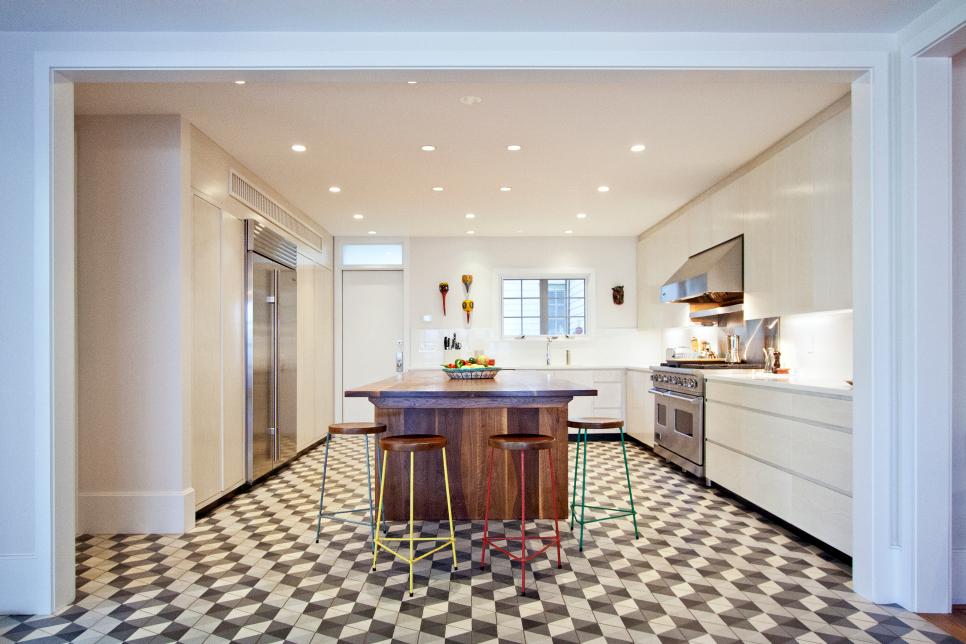
Large-Format Tiles
Large-format ceramic tiles are an ideal choice for creating a sleek, uninterrupted look in the kitchen. These tiles reduce the number of grout lines, which makes the floor easier to clean and gives it a more modern appearance. Sizes can range from 12×24 inches to even larger, depending on the layout and space.
When installed correctly, large-format tiles can make a kitchen feel more spacious by creating the illusion of a continuous surface. They are especially effective in open-concept kitchens or those with minimal design elements. A matte finish works well for a soft, sophisticated effect, while polished tiles offer a cleaner, brighter feel.
Installation requires careful planning because large tiles need a level subfloor to prevent cracking. Additionally, using a coordinating grout color helps keep the visual lines subtle. These tiles come in various colors and finishes, including stone-look, concrete-look, or minimalist solid tones, making them incredibly versatile for any kitchen design.

Hexagonal Tile Designs
Hexagon tiles bring a fresh, playful twist to ceramic flooring. Their six-sided shape stands out from traditional squares and rectangles, offering a more artistic approach to kitchen design. You can create stunning effects by using single-color hex tiles or combining multiple shades in a honeycomb pattern.
One way to use hex tiles is as a border or transition area between different flooring types. They work beautifully where the kitchen opens into another room, offering a creative way to define the space. Another option is to start with hex tiles in the kitchen and blend them organically into hardwood or cement tiles for a seamless shift in texture.
These tiles also vary in size, from small penny-style hexes to large modern shapes. Choosing the right scale depends on your kitchen’s size and design preferences. Smaller hex tiles are great for compact kitchens, adding detail without overpowering. Larger hex tiles can make a bold statement in wider spaces, especially when arranged with thoughtful color contrasts.
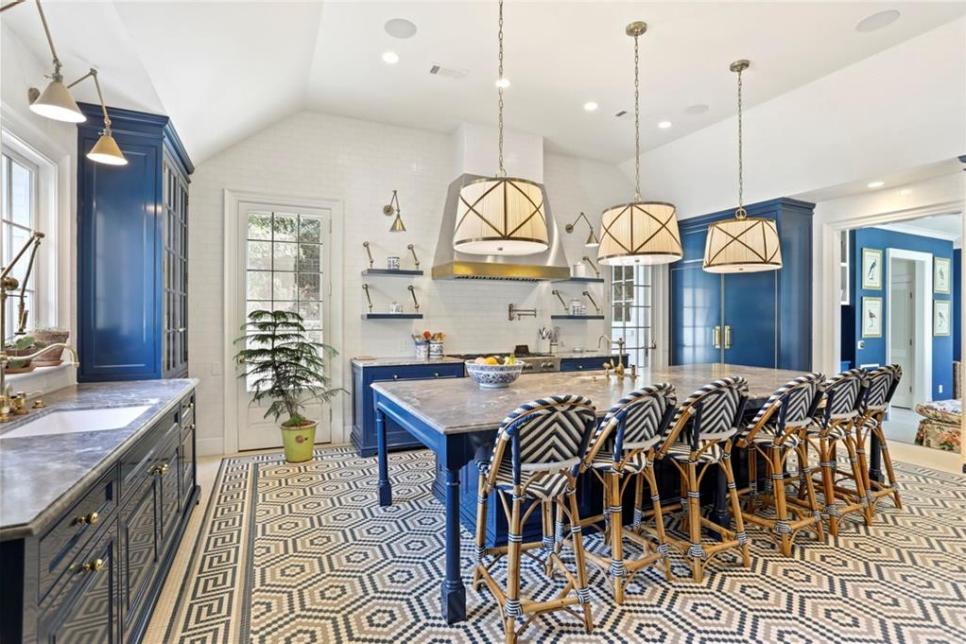
Monochrome Tones with Texture
Monochrome ceramic tiles don’t have to be boring. With subtle textural finishes, they can offer depth and richness even within a single color palette. Shades like slate gray, soft ivory, or earthy taupe can give a clean and calming look, while the texture adds interest without needing a patterned design.
Matte or textured finishes are useful for hiding minor stains and providing better grip underfoot. These tiles can mimic natural stone or concrete and often come in rectangular planks or square formats. They’re perfect for minimalist or industrial-style kitchens that focus more on form and function than elaborate decoration.
Pairing monochrome tiles with matching grout keeps the focus on texture instead of dividing the surface visually. This results in a cohesive, continuous appearance that’s easy to style around. These tiles also provide a flexible base, allowing you to change wall colors or kitchen accessories later without clashing with the flooring.
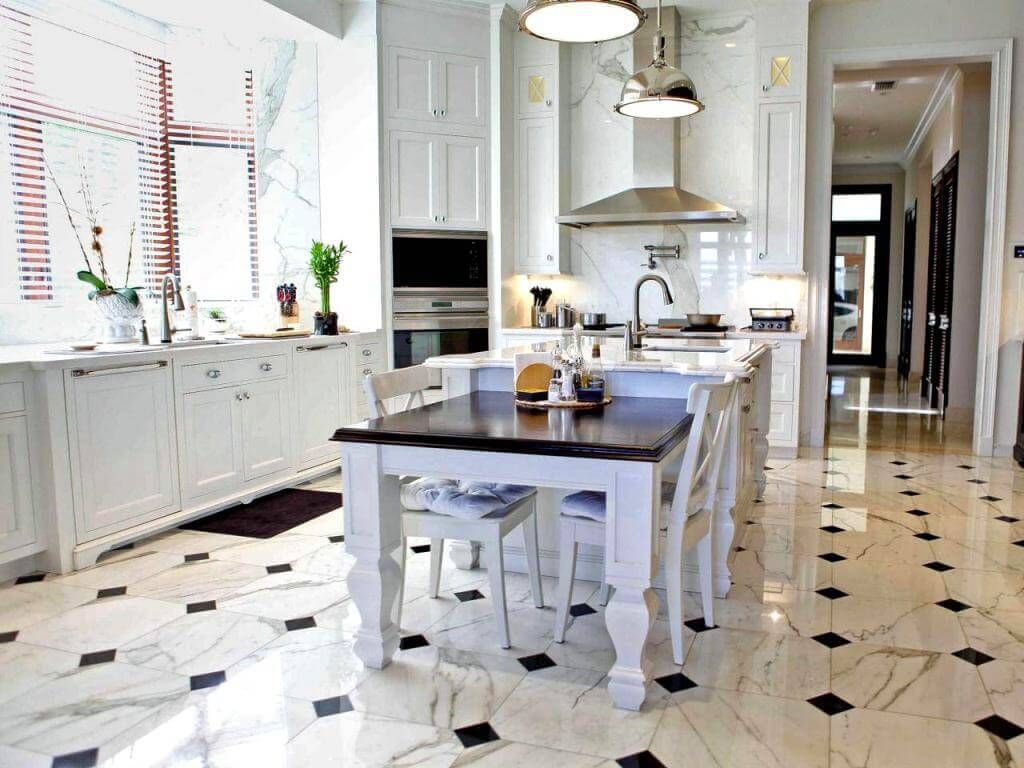
Modern Kitchen Floor Tiles Designs

Kitchen Flooring That Will Endure the Test of Time
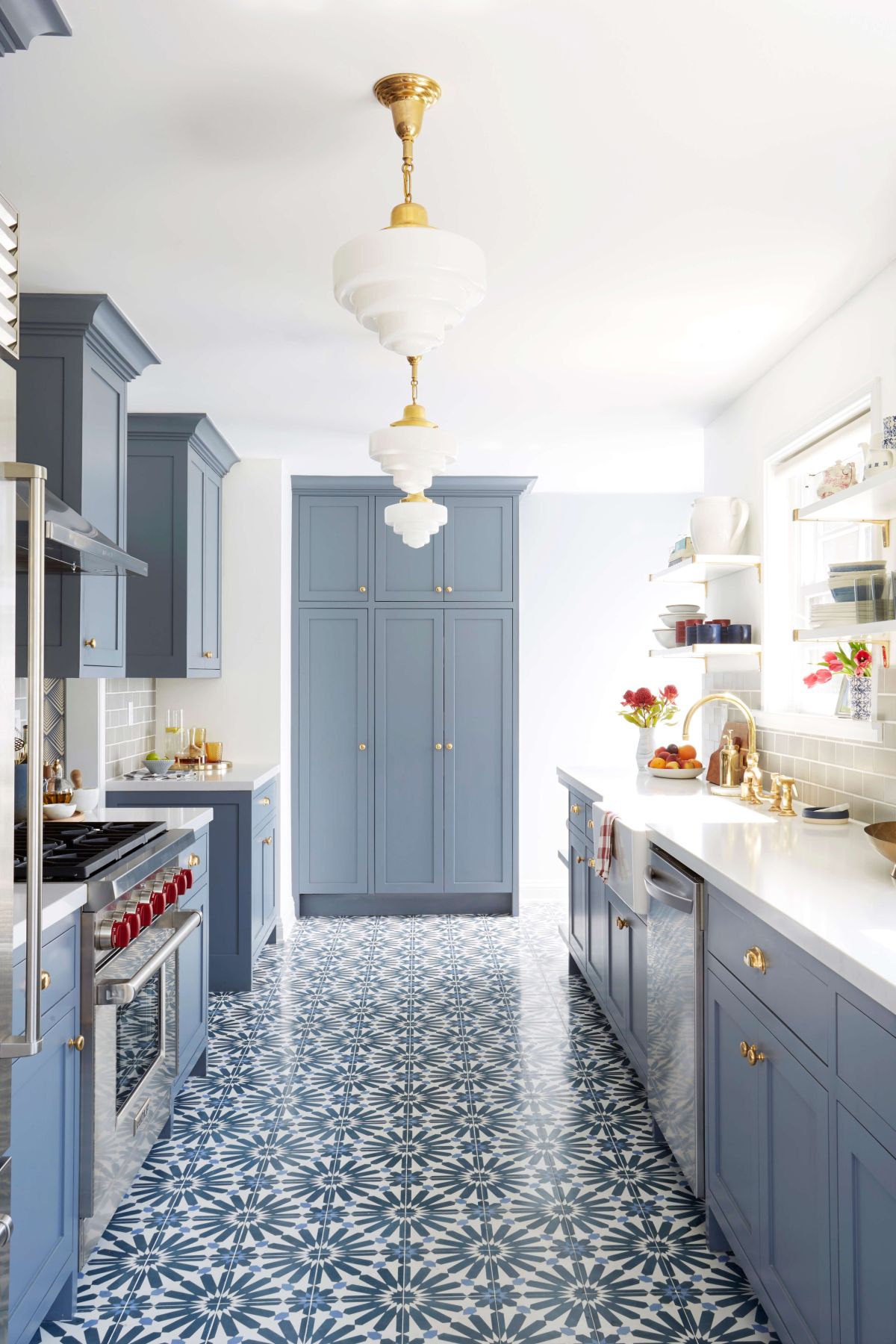
Kitchen floor tile ideas – stylish tile designs for kitchen
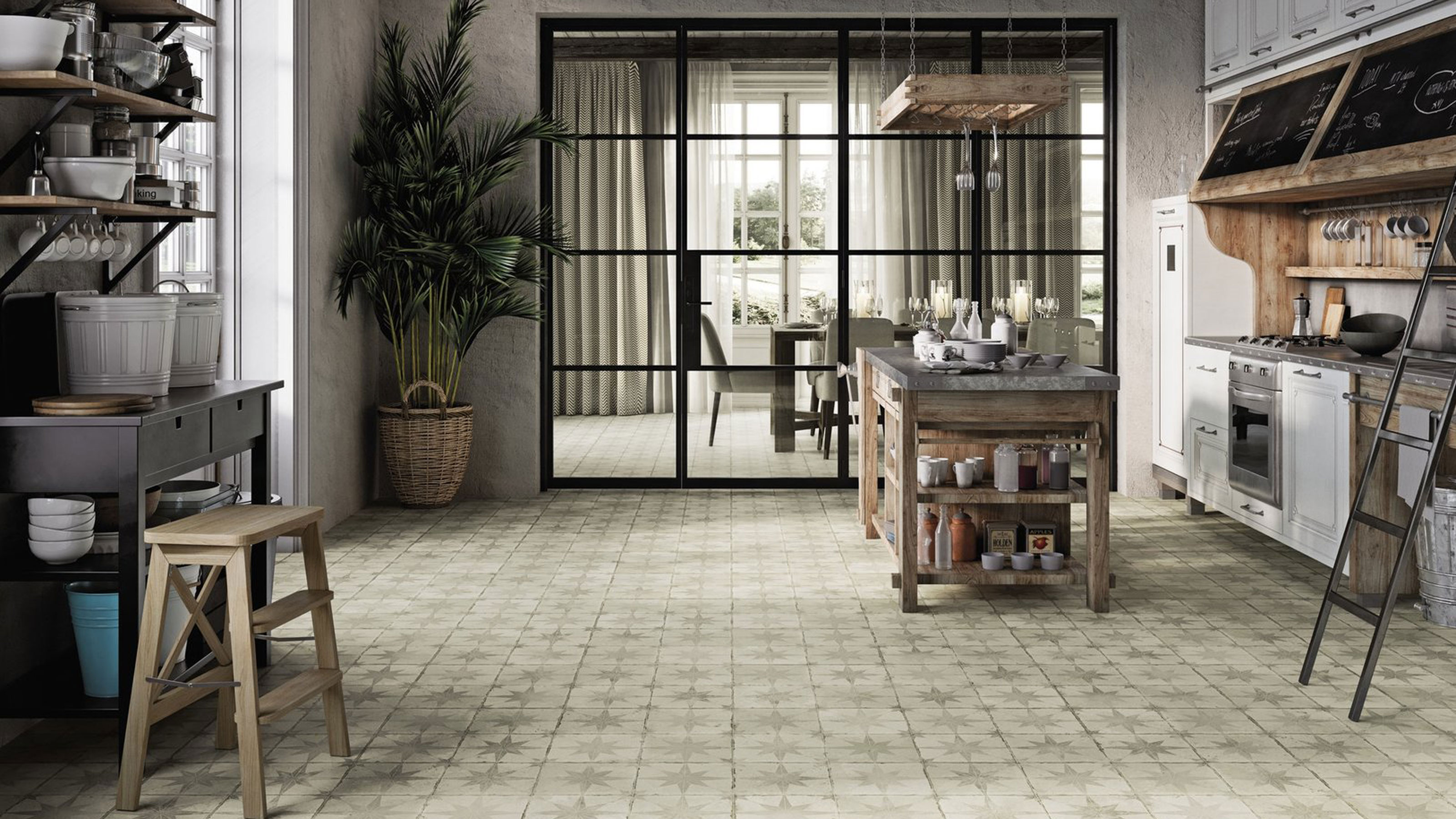
Which Kitchen Floor Tiles Are Best?
![]()
Kitchen Tiles Floor Design: 10 Tiles Ideas For A Contemporary Home

Related Posts: